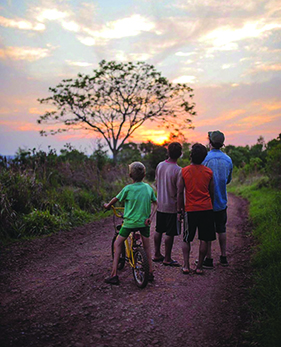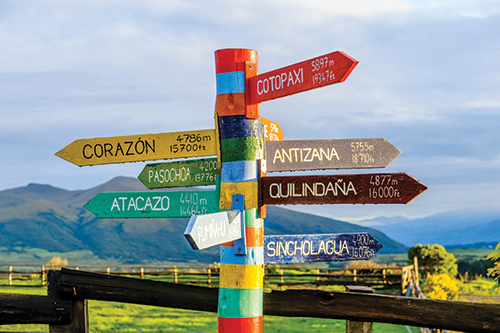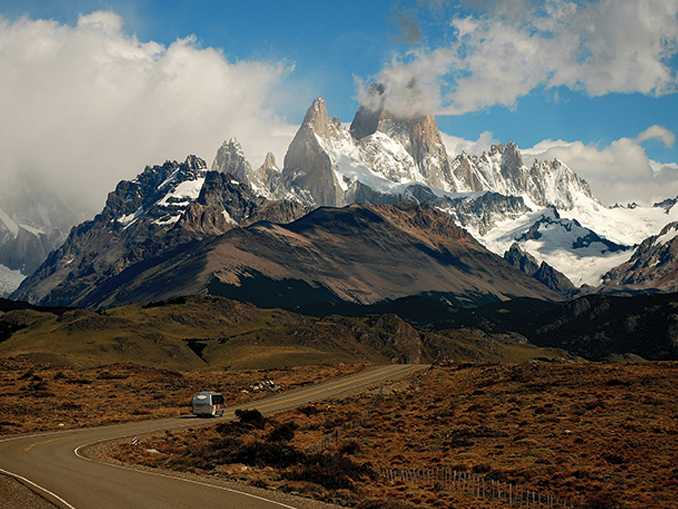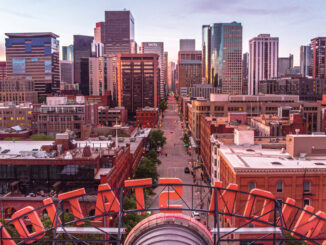 By Olivia Tykocki, Research Director, Sago, Madrid, Spain, olivia.tykocki@sago.com
By Olivia Tykocki, Research Director, Sago, Madrid, Spain, olivia.tykocki@sago.com
A region with 33 countries pulsating with political and economic turbulence, Latin America doesn’t merely observe change—it actively participates, brimming with trends, art, and social interactions.
As a global researcher with South American roots, I’ve explored a range of topics across Latin America—from travel and consumer goods to healthcare, media, and sustainability. Along the way, I’ve encountered countless stories that echo the resilience, optimism, and adaptability of its people. Engaging with a diverse mix of individuals, including passionate pet lovers, innovative Gen Z creators, dedicated physicians, and hopeful parents-to-be, I’ve realized that for Latin Americans, change isn’t just an abstract idea—it’s a part of everyday life.
I draw on extensive field experience: my teams and I have mingled with consumers at market fairs in Bogotá, observed nightlife in Buenos Aires, eaten at Mexican rancheras, drank sodas with Brazilians in the streets of Rio, shopped with moms in Santiago de Chile, collected intriguing “liquor artifacts” across Peru, Argentina, and Panama, and even dined in the heart of a Caracas shanty town. Oh, yes, there are a lot of amazing stories to tell… and it seems as if political and economic fluctuations have turned Latin Americans into pilots navigating turbulent skies.
Take Brazil and Argentina, for example, where political instability has led to uncertainty. Venezuela’s economic turmoil and political unrest led to mass emigration, while in Chile, protests over inequality and social issues have sparked calls for political reform and economic restructuring.
However, let’s not just view Latin Americans as survivors of storms—but also as masters of adaptation, facing life’s challenges head-on.
Navigating Turbulence: The Dual Impact of Political and Economic Upheavals on Latin American Lives

The turmoil in Latin America impacts the lives of the region’s inhabitants in ways that underscore the complex interplay between enduring cultural values and adaptability.
- These challenges can deepen the appreciation for constant cultural elements, such as the strong emphasis on family, tradition, and religion. In the face of uncertainty, these traditional values provide a sense of constancy and security. Marketing efforts that align with these cultural pillars can offer reassurance and serve as an emotional anchor during turbulent times.
- Yet, challenges do not always manifest solely as distress, unease, or a longing for familiarity and tradition. Instead, they can catalyze a proactive response to external pressures, igniting a spirit of adventurous exploration and fueling imagination. Marketing efforts can leverage this dynamic by tapping into the spirit of resilience, encouraging innovative approaches and creative problem-solving in the face of challenges.
1) Resilience through Cultural Values: “Pursuit of Sanctuary”
Within Latin American culture, certain constants endure—a commitment to traditions, core values such as family and sociability, and deeply ingrained beliefs such as religious-related beliefs. Its artistic and cultural heritage, rich historiography, music—and, of course, soccer—also form the foundation of its identity.
In the volatile political and economic landscapes found across the globe, it is normal for people to find sanctuaries. In Latin America, many find sanctuary with family and friends.
This is unsurprising. In the face of hardships, families in Latin America have historically leaned on collective strength as a buffer against adversity—an exceptional characteristic compared to other regions of the world. One easy and obvious example: unlike in many Western societies where nuclear families are prevalent, Latin American households often encompass multiple generations living under one roof.
The power of family and friends remains a persistent and core theme throughout all our research studies. One such intriguing case study involves a flagship European beer brand that conducted a packaging test to redesign its label.
The brand, eager to gather insights, gauged the opinions of consumers in major metropolises worldwide, spanning from Buenos Aires and New York to Paris, Madrid, and Tokyo. The surprising revelation? None of the designs resonated with the residents of Buenos Aires, and the cause of this disconnection was the absence of a one-liter bottle among the packaging options. This was opposed to other major cities around the world, which expected single-serve smaller bottles and six packs. This eye-opening moment underscored the strength of sharing within groups in Buenos Aires, emphasizing the cultural significance of one-liter beer among friends and the importance of family rituals in the region (barbeques, campfires, big lunches, gatherings).
In another project, we explored the intricacies of a renowned coffee brand through a laddering study. Drawing from a multicultural sample of Latin Americans spanning the Caribbean islands, Mexico, Central America, and South America, we explored the core attributes associated with coffee. After some pretty exciting in-depth interviews, a discovery emerged—the aroma stood out as the key attribute evoking the highest degree of positivity and harmony, sparking all kinds of emotions.
Further analysis revealed that the aroma held a profound, though unconscious, metaphorical connection to the father figure—a provider of coffee during childhood. Whether recalling the scent of coffee brewing in a pot on a ranch or on a table adorned with delicacies overlooking hills or the sea, the aroma became a nostalgic reference point for childhood experiences.
Just by mentioning it, we discovered it had the potential to make consumers feel happy and calm. It didn’t matter if it was something they actually experienced or just imagined—the power of this scent had the remarkable ability to transport participants to a foundational state of joy. At the heart of it all, taking on the central role, was the family, with the figure of the father embodying the protagonist in this narrative.

What does it mean for brands?
Brands can find that creatively invoking family, tradition, etc., is emotionally reassuring and calming in the context of so much upheaval. Also, it is no wonder that in the face of political, economic, and social uncertainties, many Latin Americans find comfort in the familiar brands that surround them. Many consumers stick to preferred brands not only for quality but as a comforting constant in the middle of change.
These brands serve almost like a part of their identity, offering a sense of stability in a constantly shifting reality. The unspoken message seems to be: “Despite everything else changing, my usual purchases remain constant, providing a sense of security.”
It’s not just about transactions; it’s about connections. Finding a sanctuary.
2) Resilience through Imagination, Creativity, and Adventurous Exploration
However, adversities do not always reside in distress, unease, and a strong desire for comfort and tradition. They can have an (almost opposite) effect of enabling a proactive response to external challenges, one that fosters adventurous exploration, fuels imagination, and sparks creativity. Mirroring the “pursuit of sanctuary” from the other side of the continuum, we find “outward-directed adrenaline.”
One such example came from interviewing young, rare disease patients in a red zone in Argentina (areas characterized by elevated levels of poverty). They dealt with constant socio-economic crises, rampant inflation, fragile institutions, unpredictable policy changes, but also dysfunctional family units due to overcrowding.
In the heart of these struggles, I spoke to resilient parents and children who faced the complexities of rare diseases alongside the broader socio-economic issues that define their environment, for example, accessing medication in isolated regions with no actual roads or streets. In these extreme situations, it became clear that underprivileged Latin Americans, far from simply adapting to adversity, often show great improvisation skills, finding alternative paths when doors close. One might see creative solutions such as borrowing an autoclave from places like hair salons or emergency clinics when essential sterilizers aren’t available or even downright boiling all necessary materials.
A resilient spirit was present among those who faced circumstances beyond their control.
Even more, the rush of adrenaline that can be experienced while “surviving” turbulence can trigger a response in the brain, generating a sense of excitement. Interestingly—we hear in many focus groups when tackling themes like social life or emigration—that many Latin Americans who relocate to countries prioritizing stability experience a sense of boredom and even depression, underscoring the invigorating impact of adrenaline amid unpredictable circumstances.
What does it mean for brands?
Within this diverse society, different profiles and segments emerge. While some may gravitate toward well-known brands, others may embrace a more adventurous exploration. This tends to be more true for a particular demographic: people with professional positions who interact with professionals around the globe, potentially hit less hard by the financial turmoil and violence, who can lean more into creativity and flexibility.
Take, for instance, the buzzing gastronomic scenes in certain cities across Latin America—a testament that resilience and creativity can thrive even in the face of adversity.
Cities such as Mexico City, Buenos Aires, Lima, São Paulo, and Santiago have become epicenters of gastronomy, attracting food enthusiasts from around the world. Despite economic challenges and social uncertainties, Latin American chefs and food entrepreneurs continue to push boundaries and experiment with new flavors and techniques. Their adventurous exploration of culinary traditions fuels imagination and sparks creativity, transforming adversity into opportunity. For example, in Mexico City, you might find restaurants serving up traditional dishes like mole poblano alongside innovative interpretations using local ingredients like cactus and capulins (edible grasshoppers).
This intrepid spirit extends across various facets of life—fashion, concerts, music, beverages, and trends—reflecting an authentic and unique Latin American style, a distinctive sense of humor, an optimistic attitude, and vibrant joie de vivre. These qualities embody the essence of Latin American culture, illustrating how people navigate change with resilience and adaptability.
By tapping into this very Latin American definition of resilience, brands can connect with consumers on a deeper level and offer solutions that resonate with their needs and aspirations, even in the face of adversity.
Embracing Diversity
Despite commonalities, Latin America is not a monolith for brands to homogenize. Each country and each city within have unique traits, as well as a rich diversity that transcends simplistic categorizations.
After conducting numerous qualitative studies, we can conclude some cross-cutting analyses that yield powerful insights across markets.

Just as we can spotlight an analytical atmosphere in Buenos Aires, often hailed as a city of deep thinkers, we can talk about Brazil’s exceptional biological and cultural diversity, encompassing linguistics, ethnocentrism, and a strong sense of identity.
Chile, in its unique way, often showcases a reserved and thoughtful communication style, reflecting a cultural emphasis on prudence and consideration. Meanwhile, in Colombia, beauty can hold a profound place within the cultural fabric, and themes like gender inequality, past narratives of violence, and magical realism influence general consumer attitudes.
These examples highlight why it’s crucial for brands to recognize the distinct identities within the region, embracing the complexities and nuances of individual cultures. Latin America’s true wealth lies in its heterogeneity, and any attempt to oversimplify risks misses out on the intricacies that make each country a gem.
It’s not for nothing that Latin Americans often refer to each other as “hermanos latinoamericanos,” emphasizing the deep sense of connection and shared identity among the diverse nations. But even though “hermanos” (brothers) conveys familiarity, each country within the region has its differences.
In essence, amid economic uncertainty, societal setbacks, political unrest, and the unfortunate rise in poverty rates, accompanied by glaring inequalities, there is no one-size-fits-all approach to weathering these storms. Instead, diverse tools emerge, and the bonds among people intensify.
In the realm of research, Latin America inspires us with its diversity, flexibility, and uniqueness.




